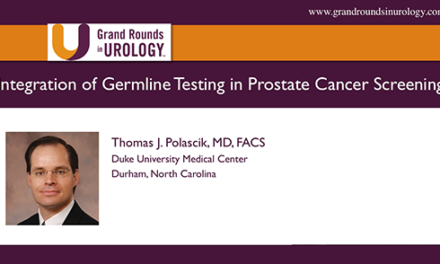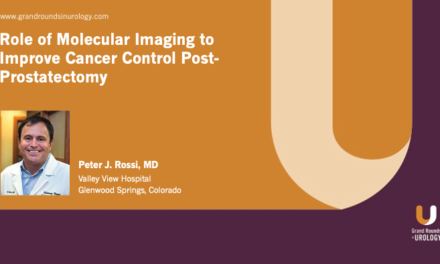Peter F. Orio, DO, MS, presented “Socioeconomic Aspects of Prostate Brachytherapy” as part of a course on Prostate Brachytherapy released in 2021 and created by the American Brachytherapy Society in partnership with Grand Rounds in Urology.
How to cite: Orio, Peter F. “Socioeconomic Aspects of Prostate Brachytherapy.” September 2021. Accessed Jul 2024. https://grandroundsinurology.com/socioeconomic-aspects-of-prostate-brachytherapy/
Socioeconomic Aspects of Prostate Brachytherapy
As part of a special course on brachytherapy for prostate cancer from the American Brachytherapy Society (ABS) and Grand Rounds in Urology, Peter F. Orio III, DO, MS, Vice Chair of Network Operations for Dana-Farber/Brigham and Women’s Cancer Center Department of Radiation Oncology and Associate Professor of Radiation Oncology at Harvard Medical School in Boston, Massachusetts, discusses socioeconomic influences on the use of prostate brachytherapy. He begins by listing nine factors that he believes have led to a decline in the use of prostate brachytherapy: (1) a decrease in PSA screening and prostate cancer diagnosis; (2) an increase in patients electing active surveillance; (3) Nuclear Regulatory Commission requirements; (4) an increase in the number of robotic prostatectomies; (5) a suboptimal volume of prostate brachytherapy procedures being performed; (6) negative press about brachytherapy from procedures performed at the Philadelphia VA; (7) the increased technical sophistication of external beam radiation technologies; (8) a lack of knowledge of brachytherapy’s efficacy; and, most significantly, (9) markedly decreased reimbursement rates for brachytherapy. Focusing on this last point, Dr. Orio considers a report by the Government Accountability Office which found that if there was a self-referring interest in a center that offered intensity-modulated radiation therapy (IMRT), use of IMRT would increase by about 50%, while radical prostatectomies would decrease by 27% and brachytherapy procedures would decrease by 50%. He explains that in a fee-for-service model, a treatment like brachytherapy which requires one implant is reimbursed for far less than a treatment like IMRT which requires weeks of treatment over the course of multiple sessions. This creates, Dr. Orio argues, a disincentive to perform brachytherapy even though it is less expensive and results in better quality of life than IMRT. He suggests that implementation of the radiation oncology alternative payment model (RO-APM) may solve this problem. Dr. Orio explains that the RO-APM, which is being tested in certain zip codes, represents a shift to value-based care and is intended to simplify coding and reduce Medicare costs. Under the RO-APM, he notes, regardless of the modality of treatment, the payment is the same, so brachytherapy monotherapy will likely benefit from an increase in payment. Dr. Orio concludes that the RO-APM may lead to a resurgence in prostate brachytherapy by removing financial disincentives to performing the procedure.
For more on brachytherapy, check out the first module of the free Prostate Brachytherapy course from GRU and the American Brachytherapy Society.
ABOUT THE AUTHOR
Peter F. Orio III, DO, MS, is Vice Chair of Network Operations for the Dana Farber Brigham Cancer Centers in Boston, Massachusetts. He also serves as the Director of Prostate Brachytherapy for the Dana Farber Brigham Cancer Centers and is an Associate Professor at Harvard Medical School. Dr. Orio earned his Bachelor of Arts in Biology/Psychology from the College of the Holy Cross, his Master’s of Science in Public Health from the University of Massachusetts at Amherst and his Doctor of Osteopathic Medicine degree from the University of New England College of Osteopathic Medicine. He completed his residency in radiation oncology at the University of Washington Medical Center. Dr. Orio served in the US Army as Assistant Chief of Radiation Oncology at Brooke Army Medical Center, where he rose to the rank of Lieutenant Colonel. Dr. Orio is active in the American Brachytherapy Society (ABS) and the American Society for Radiation Oncology (ASTRO), focusing his efforts on the advancement of brachytherapy for prostate cancer and the socioeconomics of medicine.




